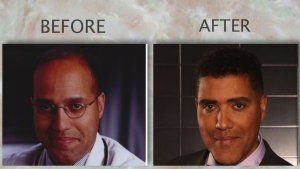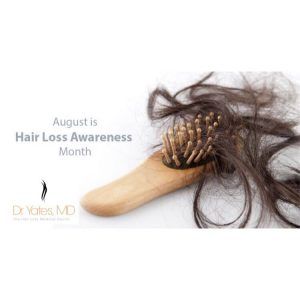
1075 South Court Street, Medina, OH, 44256
Can Scarring From A Bad Hair Transplant Be Removed?
- By Testing Testing
- •
- 07 Feb, 2017
- •
Can Scarring From A Bad Hair Transplant Be Removed?
If you have undergone hair transplant surgery that utilized outdated
methods like plugs or mini-grafts, you may be experiencing long-term
problems like unsightly scars. A repair may be needed if improper
techniques were used, if the procedure was not planned well or if the
patient was not a good candidate for a hair transplant.
Dr. Yates can use one of several methods to correct the appearance of a
poor scar depending on your individual circumstances. He can help give
you the results you wanted the first time around.
Follicular Unit Transplantation
The outdated method of hair transplantation surgery, Follicular Unit
Transplantation (FUT), involved removing part of the patient’s scalp
from the back of their head, given to technicians who manually dissect
each individual follicular unit, and the units would then be
transplanted back into the scalp.
This procedure was very invasive and the process required the patient to
have stitches or staples to close the wound properly. Recovery time for
this surgery would generally take a few weeks and patients were likely
to experience numbness, scalp tightness and persistent pain. They also
were at risk of having an obvious linear scar on their head. If a
patient developed these scars after undergoing FUT, the scars could be
seen if they chose to wear their hair closely cropped or cut.
Follicular Unit Extraction
Luckily, a new method of hair transplantation has been developed,
Follicular Unit Extraction (FUE). This procedure is much less invasive
than FUT because follicular units are individually harvested from the
donor site. The Physician has several instruments to choose from and
will make that decision based on the patient’s individual circumstances
with achieving optimal results in mind.
With FUE, the physician has the ability to choose only the most viable
follicles for extraction, so they can avoid making a painful cut and
transplanting entire strips of hair. This procedure eliminates the need
for stitches and the risk of scarring.
How does Dr. Yates fix scars?
If you have already received a hair transplant that has resulted in scarring, Dr. Yates can provide a number of solutions. He can use the FUE technique to transplant hair into the scar area. He has experienced successful graft survival and given patients dramatic results to improve their appearance. He will occasionally recommend scalp tattooing or permanent pigmentation in combination with FUE to further conceal the appearance of a scar. Platelet-Rich Plasma therapy (PRP) could also be an option.
What About Other Issues Related to a Bad Procedure?
There are many problems you may be experiencing if your initial transplant was not performed properly. Thankfully, Dr. Yates can perform a number of different hair transplant repair procedures to resolve each one. He can remove large plugs and transplant individual follicular units back onto the scalp in a way that will give them a more natural look. Cortisone injections may also be an option for those who have a raised scar.

Contact Us
We will get back to you as soon as possible
Please try again later
BUSINESS HOURS
- Mon - Sat
- -
- Sunday
- -
All Rights Reserved | Candyapple Nursery & Landscaping | This site is powered by Bluefoot.






